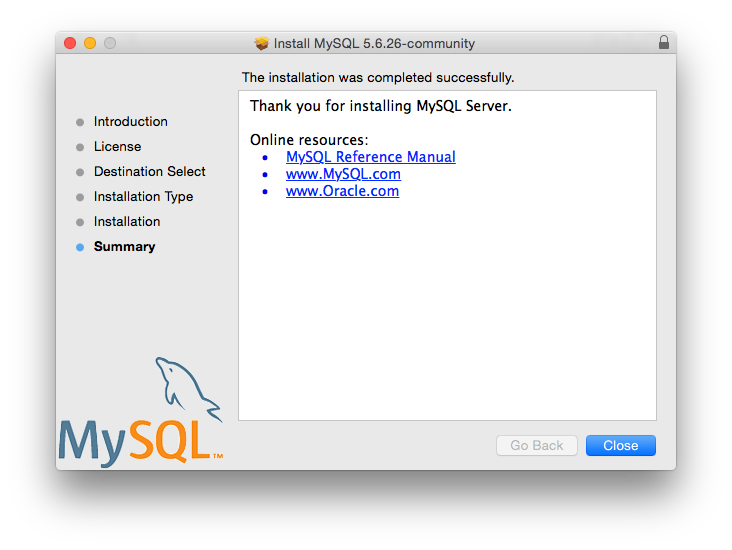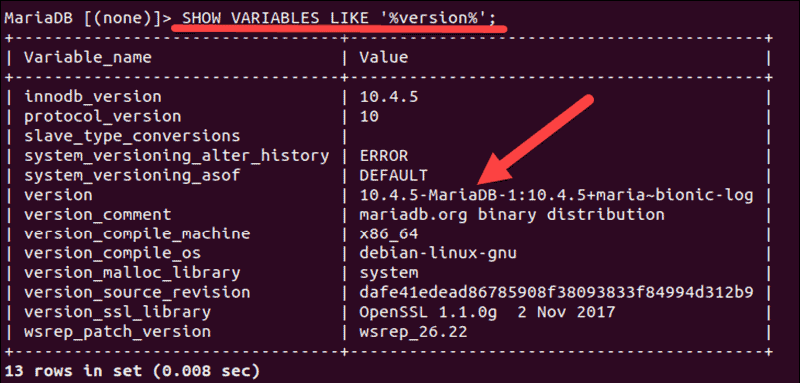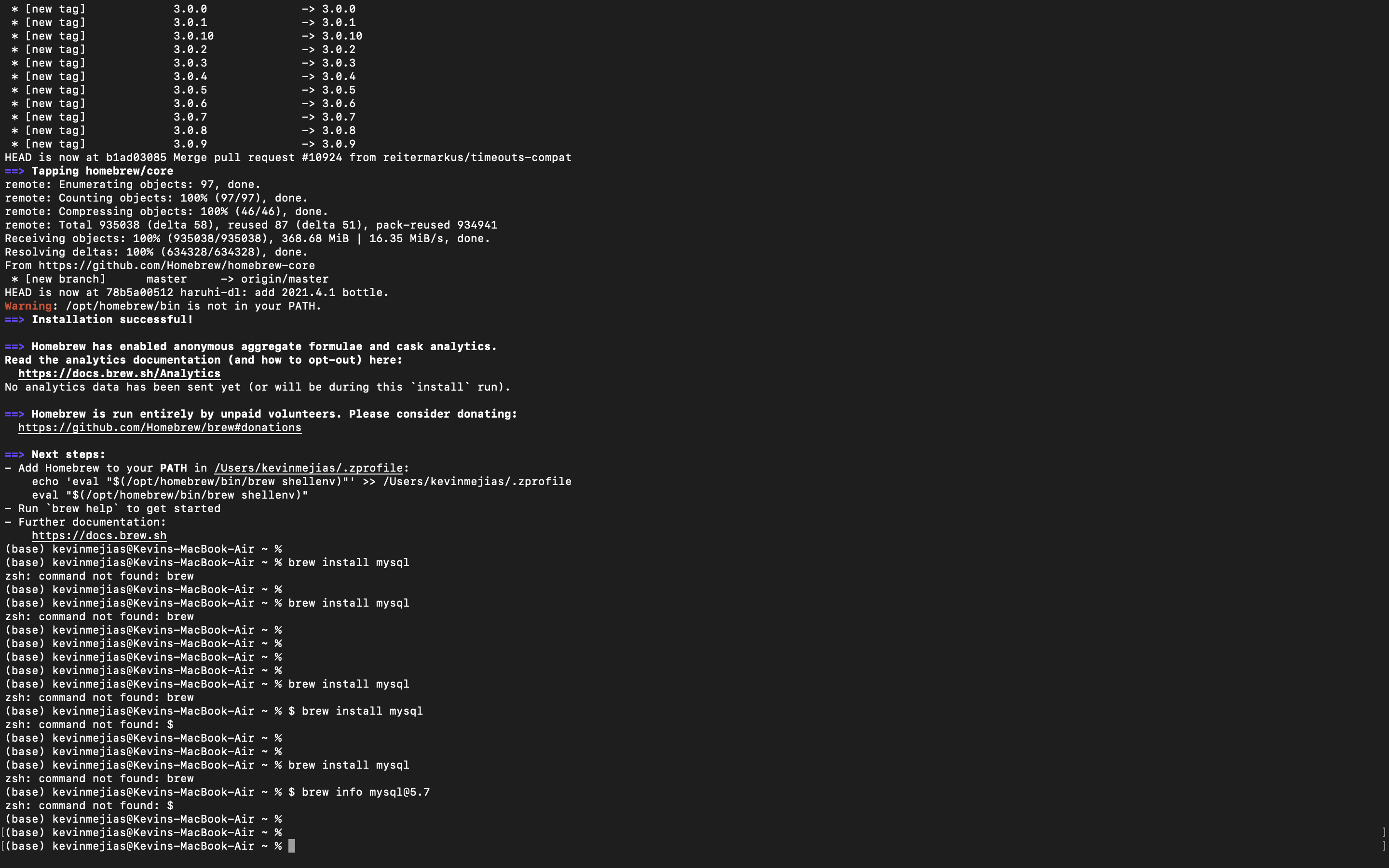

- #DE INSTALLING MYSQL ON MAC FOR MAC OS#
- #DE INSTALLING MYSQL ON MAC INSTALL#
- #DE INSTALLING MYSQL ON MAC SOFTWARE#
- #DE INSTALLING MYSQL ON MAC PASSWORD#
- #DE INSTALLING MYSQL ON MAC DOWNLOAD#
XAMPP provides only a utility for starting/stopping the servers.
#DE INSTALLING MYSQL ON MAC DOWNLOAD#
Download MAMP/MAMP Pro - for MacOS 10.4-10.6, Universal binary MAMP includes PHP 4 and 5.2, and MySQL 5.1. There is a commercial utility (named MAMP PRO) available for more advanced options. The utility also allows basic configuration of the servers, including the port MySQL runs on (default is 8889). MAMP includes a GUI utility for starting and stopping the servers. There are no hidden files and both packages are trivial to uninstall - just drag the MAMP/XAMPP folder to the trash. These packages are installed by copying the MAMP/XAMPP folder to your applications folder. The two packages differ in the selection of utilities they include, but both of them include their own version of Apache, MySQL, and PHP. They are designed to give developers an easy way to serve up PHP pages using Apache and MySQL right on their Mac. MAMP and XAMPP are complete web development packages.
#DE INSTALLING MYSQL ON MAC FOR MAC OS#
MySQL 5.0 for Mac OS X - for MacOS 10.4-10.5, Intel only MySQL 5.1 for Mac OS X - for MacOS 10.4-10.6, Intel only, recommended Version MySQL 5.5 for Mac OS X - for MacOS 10.4-10.6, Intel only
#DE INSTALLING MYSQL ON MAC INSTALL#
You can optionally install a startup item that starts the MySQL server when your computer starts. The download also includes a system preference pane for starting/stopping the server. offers a standard MacOS installer package that installs the MySQL Server and several command line utilities. This is the fastest method for installing MySQL on your Mac, but only available for Intel processors. We have provided links to the most common installation methods for Mac OS X. There are several different ways to install MySQL on Mac OS X. (See Web Hosting Providers for a list of hosting options). Most webservers and website packages will include a MySQL installation as part of the services they provide, and usually provide external connection details to allow you to connect to them in an external program like Sequel Pro. You will have to install a copy on your local machine, or connect to the MySQL server on a machine somewhere on the Internet.

What next? Visit our MySQL tutorial section to create and manage databases from the command line.Mac OS X doesn't ship with its own copy of MySQL, nor does Sequel Pro. You have running MySQL server on your system. rver status # Show status of MySQL rver stop # Stop MySQL service rver start # Start MySQL service rver restart # Restart MySQL serviceĪll done. You can use rver command with options status, stop, start, or restart MySQL service on your system. There are rver command available under /usr/local/bin directory, which is used to manage MySQL service. Type '\c' to clear the current input statement. Other names may be trademarks of their respective Oracle is a registered trademark of Oracle Corporation and/or itsĪffiliates.

Commands end with or \g.Ĭopyright (c) 2000, 2018, Oracle and/or its affiliates. Now, Connect to MySQL server using the command: mysql -u root -p You can use above file to customize your MySQL server. The main confiugration file is created at: Configuration file: /usr/local/etc/my.cnf The binary files are installed under /usr/local/bin directory and all the MySQL related files are created under “/usr/local/var/mysql” directory. MySQL server has been installed on your system.
#DE INSTALLING MYSQL ON MAC PASSWORD#
mysqladmin -u root password 'newpassword'

Use the following command to set a new password. Now you just need to configure things so that your MySQL server is auto-started brew services start mysqlĪlso, you have to set a strong password for the MySQL root account. Wait for the installation process finish. Start a terminal and run command to install MySQL: brew install mysql Here is the Homebrew installation tutorialĪt this time of writing this tutorial, Homebrew has MySQL 5.7.21 version in its main repository.
#DE INSTALLING MYSQL ON MAC SOFTWARE#


 0 kommentar(er)
0 kommentar(er)
